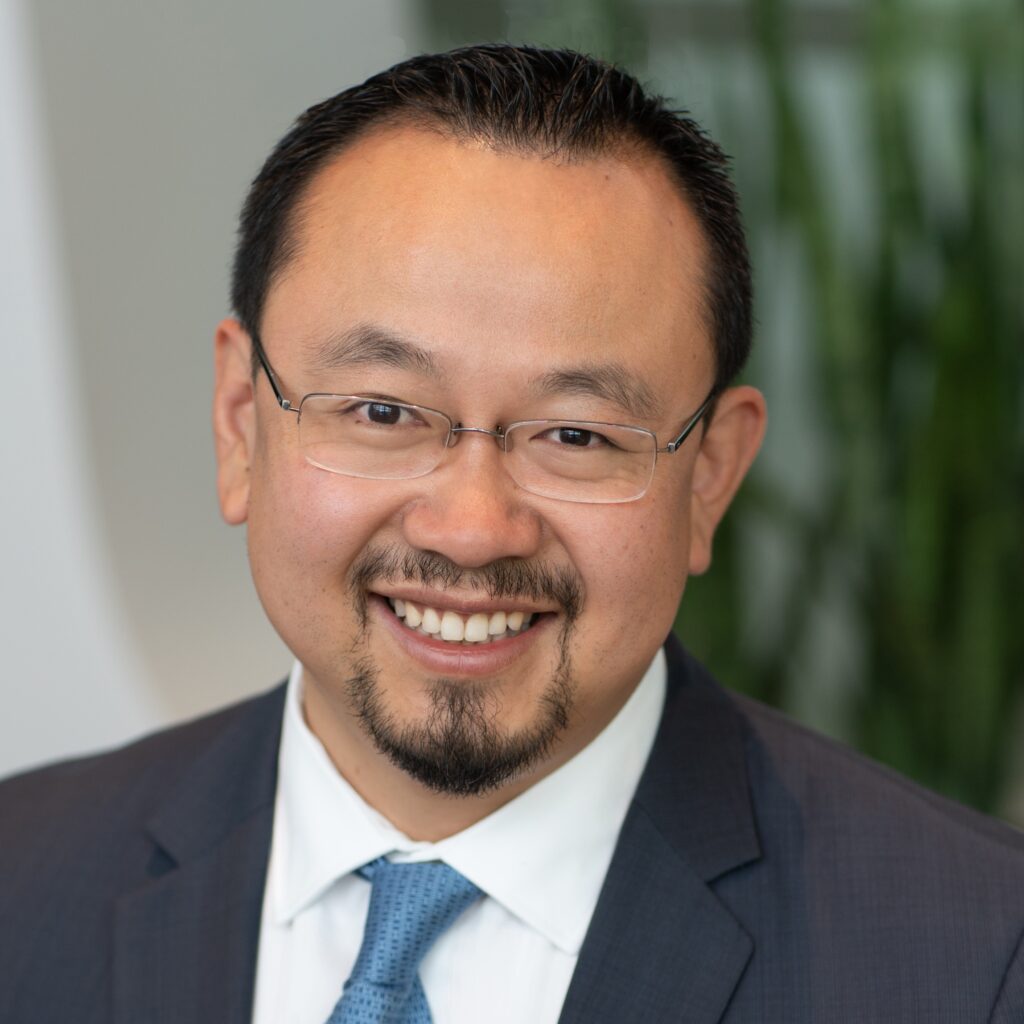Episode 5 of the Medical Affairs Unscripted podcast series recorded by Zipher, now part of Lumanity
Medical affairs (MA) continues to shed its historic role as a support function and establish itself as a critical pillar alongside commercial and research & development (R&D). However, shifting from independently operating functional areas to strategic, cross-functional, business-wide partnerships remains a challenge for MA.
Zhen Su, MD, MBA, the current Senior Vice President and Global Head of the Oncology Franchise for Merck KGaA, Darmstadt, Germany offers novel approaches for modernizing perspectives at an individual level regarding the role of MA, by fostering an appreciation and internal mindset of MA as a strategic partner, while still maintaining the ever-important compliance boundaries.
Dr Su has over 20 years of experience in academic and pharmaceutical medicine across Clinical Development, MA, Commercial and Business Development consequently allowing him to provide personal insights regarding the value and impact of improving cross collaboration and synchronizing focus across the business.
Host Peg Crowley-Nowick, PhD, MBA invites Dr Su to also share his thoughts on navigating product launches during the COVID-19 era and beyond. Drs Crowley and Su close the podcast with a discussion about how to ensure that teams work together in this new virtual environment.
Podcast Series: Medical Affairs Unscripted
Hosted by Dr Peggy Crowley-Nowick, in Medical Affairs Unscripted we explore a range of topics related to the strategic role of medical affairs from the perspective of industry experts. Through these conversations with our guests we will share first hand experience to provide the listener with insights and knowledge about the evolving role of medical affairs.
Episode transcript
Zhen Su 0:00
What I see that is probably an area where we can do better is try to rotate talent a little bit. What I’ve seen is that not many medical affairs team members have rotated through the other functions, not really understanding the needs and the good and bad and ugly and challenges our peers are facing. I mean once we were in each other’s shoes, there’s been a much better appreciation of each other’s job, and also the necessity of collaboration.
Peg Crowley-Nowick 0:38
Welcome to the first season of Medical Affairs unscripted. I’m your host, Peg Crowley-Nowick, president and founder of Zipher Medical Affairs, a full-service consulting firm. During this podcast we’ll explore a range of topics related to the strategic role of medical affairs from the perspective of industry experts. Through these conversations with our guests, we will share firsthand experience to provide the listener with insights and knowledge about the evolving role of medical affairs. Please stay tuned at the end of the podcast to learn more about Zipher.
Peg Crowley-Nowick 1:10
Welcome to medical affairs unscripted. This is our first podcast of 2021. And today I am joined by Zhen Su, senior vice president — global franchise head of oncology for Merck KGaA Darmstadt Germany. Hi, Zhen, it’s great to have you on today.
Zhen Su 1:10
Thank you, Peg. It’s a great pleasure to join you today.
Peg Crowley-Nowick 1:47
I’m so excited to have you on with me today. And the main reason is that I’ve known you for the last six years, we’ve worked together very closely. I always enjoy talking about medical affairs, about science, about the business of the pharmaceutical industry with you and hearing your philosophy and your thoughts and engaging in strategic discussion. So, it’s a perfect opportunity to have you, Zhen, with me today to review and talk about how your perspectives have changed over the last few years of your career as you’ve moved across different positions in medical affairs, US global. And now as you’re in your role as head of the franchise for oncology at Merck, Darmstadt, Germany.
Zhen Su 2:34
Thank you, Peg, it’s always a great honor to have opportunity to meet with you and chat with you. I mean, you know how much I value your opinion and also your expertise in this space, like you said. I mean, now, two decades in oncology, you’ve not only sort of gone through the medical affairs, from the frontline field to the head office, to the regional to the global from that linear track, but also now having done the R&D side and also commercial side, really giving also a surrounding sound in terms of what you know how, you know, people values, medical affairs or function and as a scientific leader, for any pharmaceutical company. So, this is a terrific topic that near dear to my heart.
Peg Crowley-Nowick 3:20
Excellent. I’m excited to talk about that topic. And also, to bring up a second topic about launch readiness in a virtual setting and what it will take as we live through the end of the COVID pandemic, hopefully and the reopening of our world and what launches will look like into the future. So, those are the two topics for today. But before I begin, I always like to start with that important question of what was your aha moment? What did you find? Or an event that happened? Something you were involved in? That was the aha moment for you realizing that medical affairs was so important to the pharmaceutical industry?
Zhen Su 4:01
Well, that’s a great question, actually. So, I would say there was a moment that I will say, roughly about five years, six years into my role actually into the medical affairs and you know, I was actually part of the Global Medical Affairs of Sanofi Oncology. And we were facing such an important juncture of one brand, in terms of its, I will say medical and clinical value in the newer treatment landscape. So, and I was, you know, empowered and also given the accountability to redefine it. And, you know, before that, I think, you know, when I was in the role, always giving advice and suggestions to the commercial colleagues into medical insights, and also, you know, into medical advisories, but it’s very hard to see the impact. So, that was the moment five years ago, almost, in Sanofi when you know when we listen to the customer, listening to the thought leaders, listening to the science and we look into the science that helped to reshape a very old chemo brand into something that, I think, has a tremendous scientific and clinical value for the patients. And then to see the results of that really benefiting so many patients, reshaped the whole brand, and became the number one brand for Sanofi Oncology. And to see that impact, both from a patient perspective, but also from commercial perspective, that was my aha moment to say, well, the Medical Affairs is a strategic partner of any pharma company, and also, you know, commercial colleagues and R&D colleagues, because that strategic input really led into day and night outcome. So, that’s something that was my aha moment about medical affairs as it was really important.
Peg Crowley-Nowick 5:56
Well, it’s a great place to start because you couldn’t ask for any more than that, to have medical really providing the insights that made a difference for the company and for the patients, and we can never take our eye off of the patient as the objective behind what we’re trying to do.
Zhen Su 6:13
So, yeah…
Peg Crowley-Nowick 6:15
Go ahead, Zhen, did you…
Zhen Su 6:16
It’s so true, I think this is something that, you know, I think even we work in the pharma, no matter what background we came from, scientific, clinical, or even true, pure commercial, that the patient centricity is not only work, but something we had to live day-to-day. So, if there’s something that we shaped as the right thing for the patients, it’s definitely the right thing for the business and the right thing for the society. And I could not agree more, Peg, in that, you know, you bring up this very, very important, you know, foundation of what we do.
Peg Crowley-Nowick 6:49
In one of the pieces of your story that comes across to me is the concept that medical affairs is an important strategic partner with commercial and with the research and development group. And yet, in many companies, I see people struggling to find their role and to find that they can speak up and lead in those areas. What is your perspective, especially as you’ve been in different roles? How has your perspective changed on the role, the position of medical affairs within companies?
Zhen Su 7:26
So, you know, Peggy, you speak to some of the pain points we have in the system? I mean, we have been in the industry, that how to define Medical Affairs, right? I mean, even the name itself, we sometimes make fun of ourselves as affairs is a mix of activities that didn’t really highlighting what is the tangible outcome, because when people talk about R&D, we know exactly they need to develop medicine for approval. When we talk to a commercial entity, they’re clearly a target, and also go to bring this to the market and enable you to generate, I will say, results for the company. But when we talk about medical, oftentimes, we’ll get into what does medical do. I think we talk about average and evidence generation. We talk about, you know, scientific insights, and also talk about, you know, education efforts, a lot of value there, where what I see that is probably where area we can do better is try to rotate talent a little bit, I think what I’ve seen is not a lot of medical affairs team members have rotated through the other functions, really understand the needs, and the good and bad and ugly and challenges our peers are facing. And you know, also after I’d done the commercial role as well, I have a greater appreciation for my commercial colleagues. So, the same thing, like I have a greater appreciation for my R&D colleagues, right, the pressure they’re facing, I mean, once we were in each other’s shoes, and there has been a much better appreciation of each other’s job and also the necessity of collaboration. Because that’s something once you know, nothing is adult learning that we have is needed to practice and also need to see results. So, that’s one thing I thought, maybe if we have more people talent, you know, ‘cross-pollenization’ or rotating the talents with different functions, it will help a generation of medical affairs leaders really understand the business end-to-end. And then that can be really a true value add and be perceived by peers, you know, by the other cross-functional colleagues.
Peg Crowley-Nowick 9:46
It’s a very interesting concept to bring up and it just makes me think about industry in general, many large companies have significant rotation programs and the purpose of that always seems challenging — a couple of years in a role, how can you really get very good at what you’re doing, and you move on. But the reality is that you bring a fresh set of eyes, you learn a lot, you bring that to the next role. And by doing those types of rotations, you really bring a different perspective to your work. And it makes perfect sense. But I very rarely see it around medical affairs, I see it on the commercial side. And it’s very common on the development side, once the people have kind of completed development and they want to move into something else, they’ll come over into medical affairs, but you don’t see a lot of rotations among medical people in general. So, it’s a great way to not only enhance the cross-collaboration, but to also increase the capabilities and the skill sets of the medical team as they’re coming through. Are you incorporating that in your organization? Do you encourage that?
Zhen Su 10:59
We definitely encourage that. But I think that there’s definitely room to improve as well. Because I think, you know, there are a couple of obvious barriers, I think for this type of approach. One’s the commercial medical boundary, I think that’s very important. We need to respect that because that is part of the rules to do business, to make sure that arm lands, but then how we engineer people to cross that boundary, but with different roles of responsibility and adequate training. That’s one significant, you know, I will say, areas that need a lot of attention, so people don’t drown when you don’t give them a lifejacket, just throw them into deeper end of the water. So, right? I mean, that’s also something very important. And the other thing is, I felt really important is enabling not a one-way career ladder, it’s more, sometimes zigzag helps. I know, we talked about it, it’s just a philosophy, my humble opinion. I think, you know, even my personally, I hope, you know, you know, three or four different cross-functional couple of times, having been able to do that, then I think it’s also helped to show that the learning agility, and also the organization willingness to see people rotate in and out and coming back to certain roles. And I think I have seen, you know, commercial colleagues I took on the medical side, train them a couple of years and send them back, they have different perspective of medical team. And vice-versa, right, I mean, also medical team that rotate two years, and then commercial and send back. So, it’s really interesting to see how people afterwards, after the zigzag, now would have a whole new perspective, understanding the other side.
Peg Crowley-Nowick 12:54
Absolutely. And then from a collaborative perspective, I know we have compliance rules that set the boundaries in place, what do you see from the perspective of the medical team engaging with a commercial organization from a strategic perspective? And on the other side, engaging with the clinical development group? How do you see that being optimized?
Zhen Su 13:19
So, I think, you know, that is, I think, an ongoing area, I would say, you know, for a lot of companies and teams to try to figure out what’s the best way, the optimal way to do it. So, there needs to be, how to say, the first thing is leadership from the top — willingness to embrace more collaboration. I’ve seen in my own organization, many other organizations, and this can be done, you know, when the leaders from the top are embracing this collaboration mentality, that certainly helps. The second thing I see that helps is shared goals — goals: what I mean is the purpose. The purpose of helping patients is that people can have a common purpose and trust their willingness to spontaneously collaborate with the right boundary. So, I mean, one’s from top, one’s from bottom, and then within the system itself, process wise, we can engineer this with the compliance team with the legal team, enabling the right model, so people have the safe zone to collaborate. I mean, that’s also very important they feel they’re not breaking the rules. So, I think that particularly in shaping the strategy, understanding, you know, where the direction or the brand or even launch activity is going, this joint leadership would, you know, help a lot of organization to enable better collaboration. Same thing with the development team, I would say. And maybe as for your example, Peg, I think what I sometimes see is, sometimes challenges and difficulties bring teams together. There’s nothing better than two, you know, cross-functional teams try to handle a challenge, you know, hand-by-hand, shoulder-by-shoulder. Sometimes I see medical and clinical development work extremely well when the important study is behind the enrollment target. So, everyone has skin in the game, and we’re enabling a faster enrollment. So, we can, you know, keep up to speed without devalue the middle medicine, and use some circles like circumstance like this, you see, the two teams suddenly, you know, come together, and get it done, which is truly remarkable.
Peg Crowley-Nowick 15:59
It’s a common goal.
Zhen Su 16:00
Exactly.
Peg Crowley-Nowick 16:01
That common goal makes a difference. And it helps everybody and then respect builds. And it certainly makes it easier to work together on the next project or the next challenge. But that’s almost a great transition into thinking about the biggest challenge that we have right now in front of us, which has been COVID. Hopefully, we’re coming out on the other side and starting to reenter the world and reopen. But with that, there’s been a lot of changes for the companies that had to launch during this period. I was just reading some statistics that said there were 86 brands that were launched during this period — 45% delayed launches, over 9% drop in NPV and maybe $10 billion lost because of that. What does this mean for our futures? There are a few companies that were very successful when they launched with very strong data, a great need. But what does it mean from a medical affairs perspective? Even from a commercial perspective? What do the launches look like into the future?
Yeah, Peg, thank you for the question. I will say my disclaimer, this is my personal opinion, so…
Absolutely.
Zhen Su 17:13
So, knowing that we are also a company that are operating in this kind of environment. So, if you allow me maybe I take a step backwards, and then also take a step forward? What do I mean? I think the step backwards is a notion of, you know, as a pharmaceutical industry or biopharmaceutical industry, we are no foreigners to entering into something uncertain, or that there’s a big shifting in terms of revolution. And there have been several of this type of occasions in the pharma industry from rules/regulation change to some of the I would say, even the big reimbursement, major policy change, so that have significant alter to some the farmer go to market model, let’s put this way. And as it is most recent one, it also is a good example as well as my bottom line, I think if we take this pandemic environment has changed is the healthcare system is changing. It’s the social environment where operating is changing. So, and I think the news, the good news there is, I’m a half glass full guy — So, if we talk about a 96, or near 90, you know that around 90 launches, at least someone’s doing it right.
Peg Crowley-Nowick 18:40
Right, right.
Zhen Su 18:42
Maybe half of them were struggling, but the other half was doing it right so there’s something that I think we all can learn from each other and looking at that sort of the team who did it well. And I know there are some key elements also, just from a philosophical way, when you approach unknown and approach the challenges, I felt there are two or three fundamental things very important. One thing is this really fundamental word of agility — that the question is not “to start or not” ultimately, you have to start. I mean, taking no action is also detrimental. I think there’s, you know, some groups may be just suddenly frozen, that didn’t have the activity, but I think whoever took the activity, starting to move is the most important thing. To make, even maybe the wrong step, but need to step forward. So, that’s one. Second is in listening to the customer — I found this was really interesting to see among my industry, peers, not everyone doing, you know, go out and listen to the customer. See what they want what they need. So, you know, I see the ones who did that do better. In terms of the customer preference of, you know, Virtual Engagement, the platform, they want to use the message. I think the new game in town’s relevancy, right? I mean, and someone said, you know, oncologists are more demand more demands and demands more. So, it’s really interesting to see that you’re listening to the customer so closely. And then the last…
Peg Crowley-Nowick 20:24
Personalization.
Zhen Su 20:26
Personalization. Exactly. Yeah, you’re so right, is that personalization, so listening to the customer, and also their ecosystem. Because what I found out, because I’m a physician as well, some of the clinical practice was put in community practice, the roles have evolved within that office between the nurse and nurse practitioner with the physician with pharmacist, I think not every organization and not every clinic operates the same way. And their roles responsibly shift as well. So, it’s really important listening to them and understand that little ecosystem there. And then last but not least, I think, is the courage to try new things, and the courage to accept some setbacks. Because I think in our industry sometimes, we may be very risk averse. I mean, I think this is the environment, we probably need to take a calculated risk means that to understand different ways of doing things that take different tools and platforms and try to engineer that to fit customer’s needs. And to better serve patients because a physician dealing in oncology is going to demand information more urgently, because they only have patients in office for half hour sometimes. So, if they can get the information that faster, they’ll be great. So, that’s in general, the step back in terms of dealing with uncertainties and fast-moving changing environment. One thing I will say, this notion of virtual launch is also take a step closer. What do I mean? So, closer is to look into the fundamental day-to-day activities. What I found sometimes people are too big picture orientated, nothing wrong with it, try to see, you know, what is the most, you know, newest or most, you know, artificial intelligence, machine learning enabled some really cool tools. But what I mean is, sometimes even the fundamentals can be important. So, I give you some examples, is, you know, some of the teams struggling with, you know, email opening rate, right, and because now more information goes in there, because sometimes they, it’s so easy in the email just hit the trash can icon.
Peg Crowley-Nowick 22:58
Hundreds and hundreds of emails coming in a day.
Zhen Su 23:00
Yeah, exactly. So, I find there are smart teams using fax. Because fax get printed. I was, you know, so interesting with a colleague mentioning that from the industry, so well, that’s true. Phone calls matter, right? I mean even though you know, you can’t access someone, but if you pick up a phone, you know, someone’s gonna answer and you know, talk to the people. Sometimes emails, then, you don’t know if someone read it or not, there’s no response.
Peg Crowley-Nowick 23:00
Right.
Zhen Su 23:01
So, those are the things, I will say, the fundamentals are quite important. And also how, in this new environment, medical, commercial collaboration, I mean, in a fair boundary is how we refer information from the commercial side to medical side and that info line. There are a lot of little things that I don’t think were designed for this virtual environment. So, getting the fundamentals right, also can be quite impactful.
Peg Crowley-Nowick 23:57
Well, in thinking about that, because of the way compliance is set up and the governance within these organizations, they’re really not meant to turn on a dime. There’s a lot of process in place and making those quick transitions is a little bit challenging. How do you approach that side of the business so that you can personalize a little bit more, move a little bit faster? Are there ways that companies should be looking at their governance and their review committees and some of the things where decisions are made to speed things up?
Zhen Su 24:33
Peg, I have a tremendous respect for the legal regulatory and compliance team I think their medical team, they’re doing a fantastic job. I mean, that to help us to enabling day to day activity in the most accurate but also most compliant way to do it. And the same pandemic challenges also, so you’re not creating challenges for the field team, but also creating the challenge for the compliance and legal team to review it because, you know, the certain materials, can you leave it behind as a digital version?
Peg Crowley-Nowick 24:37
Right.
Zhen Su 24:53
And there’s certain things that, you know, that — Can a physician’s signature be in the E signature? There are a lot of questions, right, I mean, in terms of how you’re engineering that? But then it’s also impossible to secure a physician signature during the pandemic environment. So, I think that’s, the way I look at it, I think maybe the important wording there is learning. And what I see the team do well is the whole head office becomes a learning organization that everyone has an open mind to understand the customer needs, and then try to find a solution, be solution orientated. And those teams do better and faster, to your point, that can get things resolved in a very timely manner. So, at the end of the day, we started at the beginning, patient matters. And what we tried to do is to make sure that accurate medical information that treating physician needed are getting it at the right time in the right place, enabling them to make an independent decision to better serve patients. So, if everyone can orientate their mindset to this because oncology is facing life or death, sometimes we say the speed of oncology, because, you know, if that patient doesn’t get the right treatment, the right time, that the outcome are oftentimes less desirable. So, and that’s where I do think on that notion is everyone need to change. And, you know, we need modify things for sure. But take a learning mindset towards it, and also open up the mind to listening to the customer, and really embrace the patient needs. I see that as powerful for our organization, that because we’re so patient-centric. So, when the when the head office, you know, listens to the customer understand patient needs, some of the action they took are fantastic.
Peg Crowley-Nowick 27:21
And I think that’s the key, we go back to the statement that you made earlier about the common goal. And if the common goal is to make sure the right patient has the right drug at the right time, then everybody can work together towards that goal. The other challenge, though, that comes in here, and I don’t mean to harp on this too much, though, is how in such a virtual world, do you keep all the cross-functional organization teams working together? So, that they’re all seeing what’s happening? It’s hard, because people, I feel, have their head down, they’re working very hard and trying to keep everything going. And there’s a lot happening, but how are you finding it to bring teams together and to really get that cross-functional work going in this virtual situation?
Zhen Su 28:10
Yeah, no, I know that my own experiences probably cannot be generalizable to a lot of other teams because I know they’re, you know, what, what do I mean is, I’m in the organization now almost six years, a lot of colleagues I know. And I think also our organization has a long history of having brought in, and also retaining some really good people, that that relationship is somewhat stable. And that I think, is maybe for some organization, that’s competitive advantage, because the team knows each other, and they have a good, you know, friendship, personal relationship, that really helps to go a long way. But also, I know that I have colleagues or friends starting anew in the new organization, doesn’t know anybody and doesn’t even have an opportunity to meet face-to-face now seven, eight months into the role into the pandemic. So, what I found there was maybe two or three things that work well for our organization. I think one is always, how to say, trying to carve out some sort of non-formal sort of not business type of meeting but more “get to know each other” meeting. And I think a little investment goes a long way for everyone because some comments from my team sometimes make me laugh as well is they really miss seeing the face.
Peg Crowley-Nowick 29:46
Right. There’s no question.
Zhen Su 29:49
So, I think, you know, this kind of opportunity talking to another human being outside of your own family does, does have a lot of attractiveness to it.
Peg Crowley-Nowick 30:01
Absolutely! Absolutely, and that is the fun part of work, isn’t it? We love what we do, we love the people that you’re with. And it’s fun to think about strategy. It’s fun to think about what you can accomplish. But it’s also nice to know that you have a good team of people around you.
Zhen Su 30:17
Exactly.
Peg Crowley-Nowick 30:18
That’s just as important, and it seems like our conversation has really come full circle — we talked about a number of topics, and you really provided us with some insightful thoughts on the importance of medical as a strategic partner. I found your comments about medical colleagues benefiting from experience in other areas of the business, a really key point in this podcast, I think it’s so critical that they understand other areas of the business in order to gain that full value of collaboration and really be able to achieve the most significant strategic impact. And thinking about that, from the collaboration perspective, we take a look at launches and your comments about launching and getting back to the basics really rings true to me, it’s so important that teams are collaborating, that there’s a common goal that people are engaged and you have to keep that going, whether it’s in a face-to-face launch or in the virtual setting. And I think that our listeners will really gain a lot from the comments that you’ve provided, and really get them thinking about these important topics. Thank you so much for your time. I appreciate having you on today.
Zhen Su 31:33
Thank you, Peg, I really enjoyed it. I’m really grateful for the opportunity to share some my thoughts and silly thoughts. But every time I’m talking to you is such a fun and enjoyable moment. Thank you so much.
Peg Crowley-Nowick 31:55
Zipher Medical Affairs is a full-service consulting firm dedicated to providing strategic services to medical affairs organizations. programs designed by Zipher can help you recognize the most critical insights from your in house and field teams and then capitalize on that data to develop strategic Medical Affairs plans, strengthen your engagement with thought leaders and build cutting edge data generation programs. Success in these areas allows the medical team to provide leadership and demonstrate maximum value to your brand and organization. Zipher Medical Affairs is here to help you.

Episode guest
Zhen Su, MD, MBA
Senior Vice President and Global Head of the Oncology Franchise for Merck KGaA, Darmstadt, Germany
“Maybe if we have more people talent, you know, ‘cross-pollenization’ or rotating the talents with different functions, it will help a generation of medical affairs leaders really understand the business end-to-end.”












